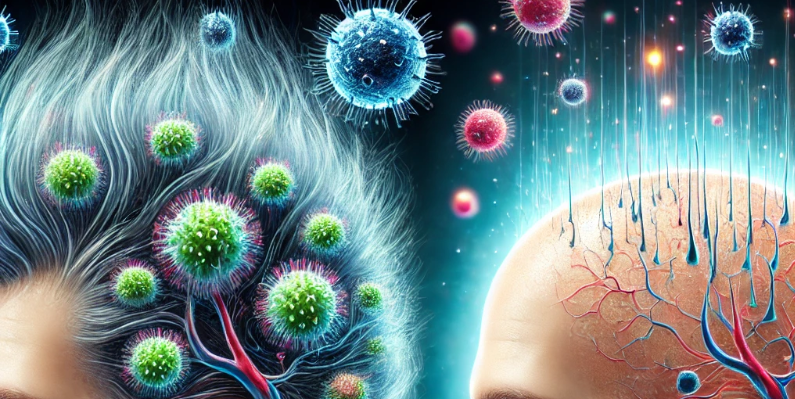Categories
- Blog (65)
Minoxidil is effective in promoting hair growth, but the potential for continue growth after discontinuing use limited. Here’s what typically happens when someone stops using minoxidil:

Minoxidil works by stimulating hair follicles and improving blood flow to the scalp or other areas. This stimulation keeps follicles active and in the anagen phase (growth phase) longer, encouraging new hair growth.
However, this effect is temporary and tied to the continued use of the product. Minoxidil does not permanently alter the follicles; it simply boosts their activity while being applied.
After stopping minoxidil, most users experience a reversion to their pre-treatment state. This means any hair regrowth achieved during treatment will gradually fall out over the course of several months.
Typically, hair that was maintained or regrown during minoxidil use will start shedding within 3 to 6 months after discontinuing the product. This happens because the follicles stop receiving the stimulation they need to remain in the growth phase.
For people using minoxidil to treat androgenetic alopecia (male or female pattern baldness), discontinuation allows the underlying condition to progress as before. Hair loss will resume, and in many cases, it may worsen if the genetic condition is still active.
Minoxidil does not cure the cause of hair loss (e.g., hormonal imbalances like DHT), so stopping treatment allows the process of follicular miniaturization to continue.
Minoxidil does not create permanent changes to hair follicles. Once the external stimulus is removed, the follicles return to their original behavior.
For some people, any regrown hairs may thin out or disappear entirely, returning the scalp, beard, or eyebrows to their previous density.
In rare cases, individuals may retain some of the hair gained during minoxidil use, but this is uncommon. The majority of users experience complete reversal of results within a few months of discontinuing treatment.
Duration of Use: People who have used minoxidil for a longer period (e.g., years) may see a slower rate of hair loss after stopping, but the eventual outcome is generally the same.
Severity of Hair Loss: Those with more advanced hair loss conditions may notice a faster return to their pre-treatment state after stopping minoxidil, as their follicles are more susceptible to shedding.
Individual Response: Some individuals respond more favorably to minoxidil and may see slower hair loss after stopping, but this is unpredictable and not the norm.
Continued Growth After Stopping Minoxidil is Unlikely: Once discontinue treatment, most of the benefits of minoxidil (in terms of hair growth or maintenance) would lose. Hair loss will typically resume, and any regrown hair will likely shed within a few months.
Ongoing Use is Necessary for Sustained Results: To maintain hair growth and prevent further loss, requires minoxidil continue and consistent use.
Therefore, minoxidil is a long-term treatment, not a one-time solution for hair loss.